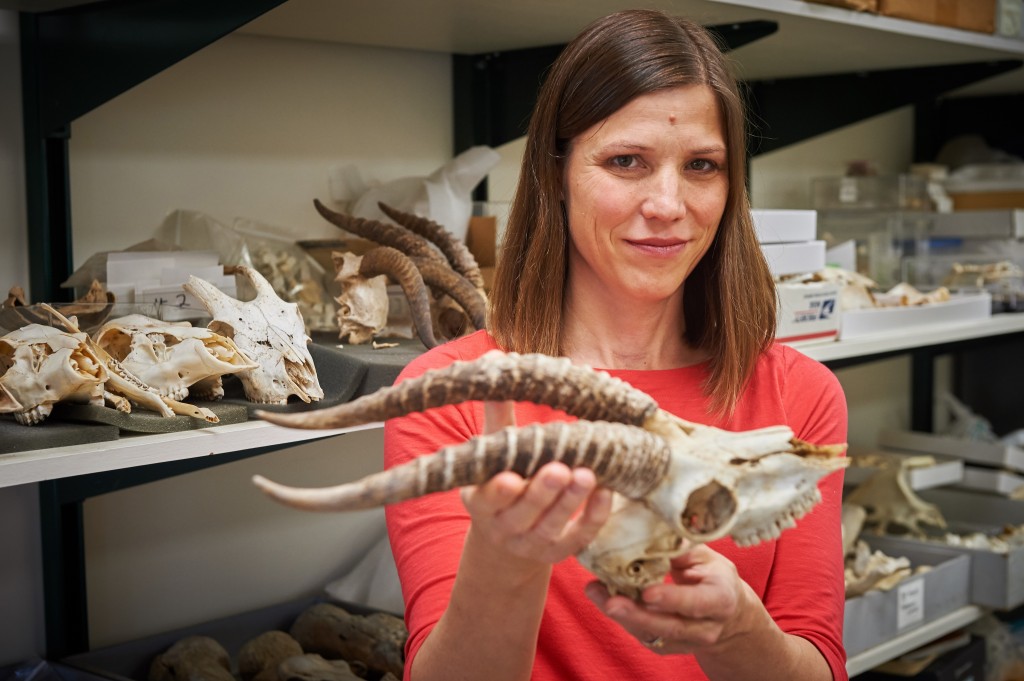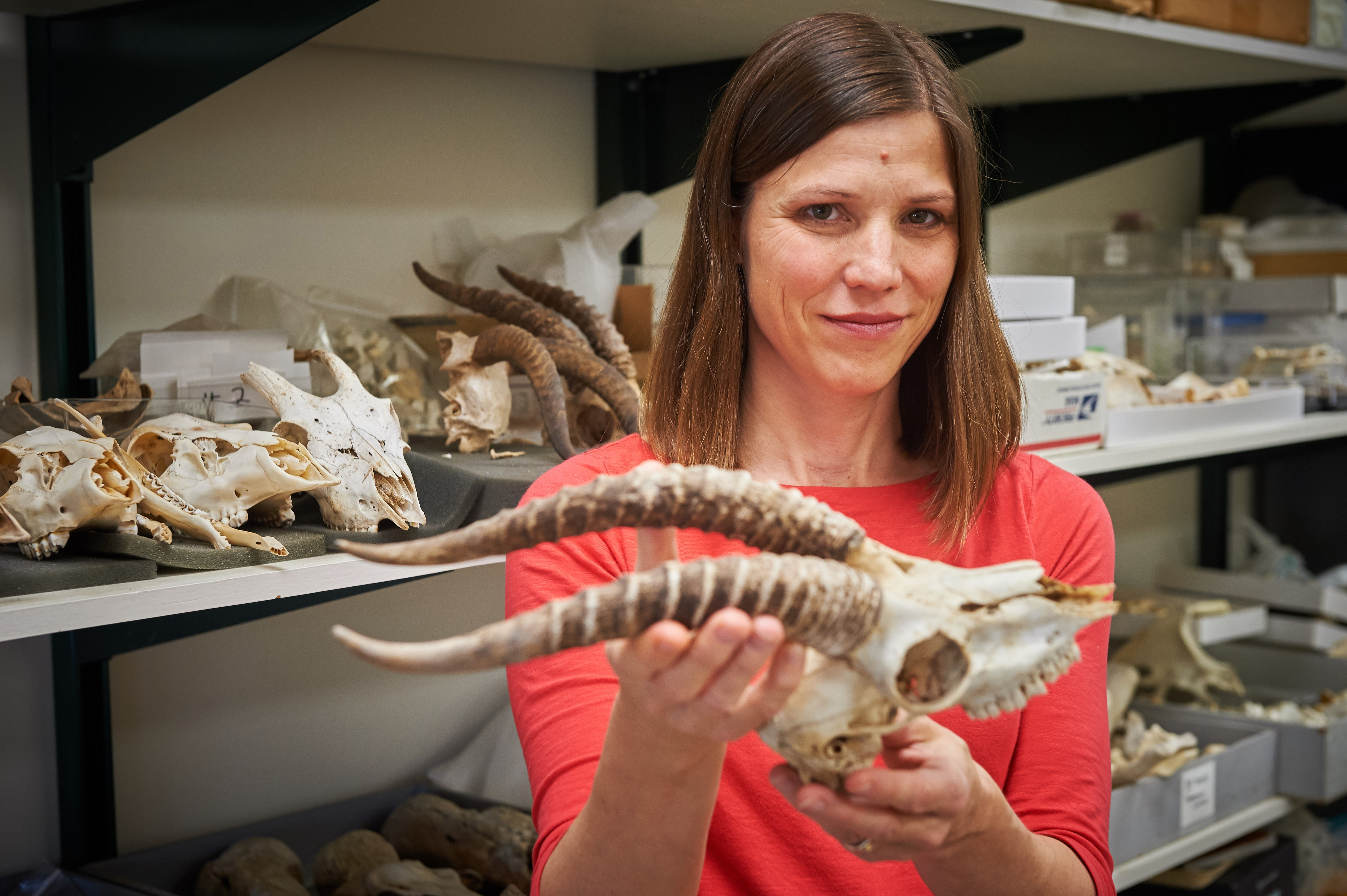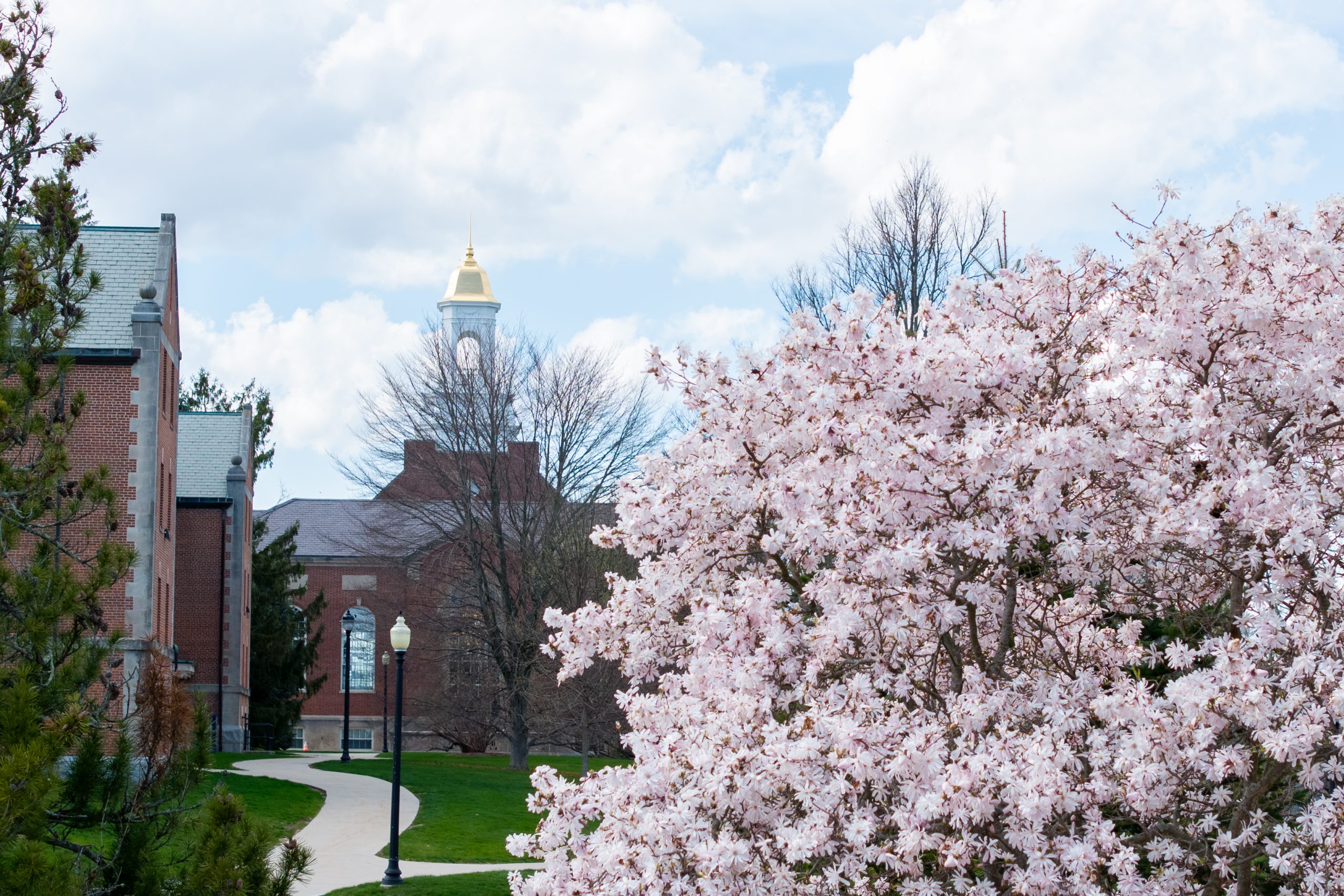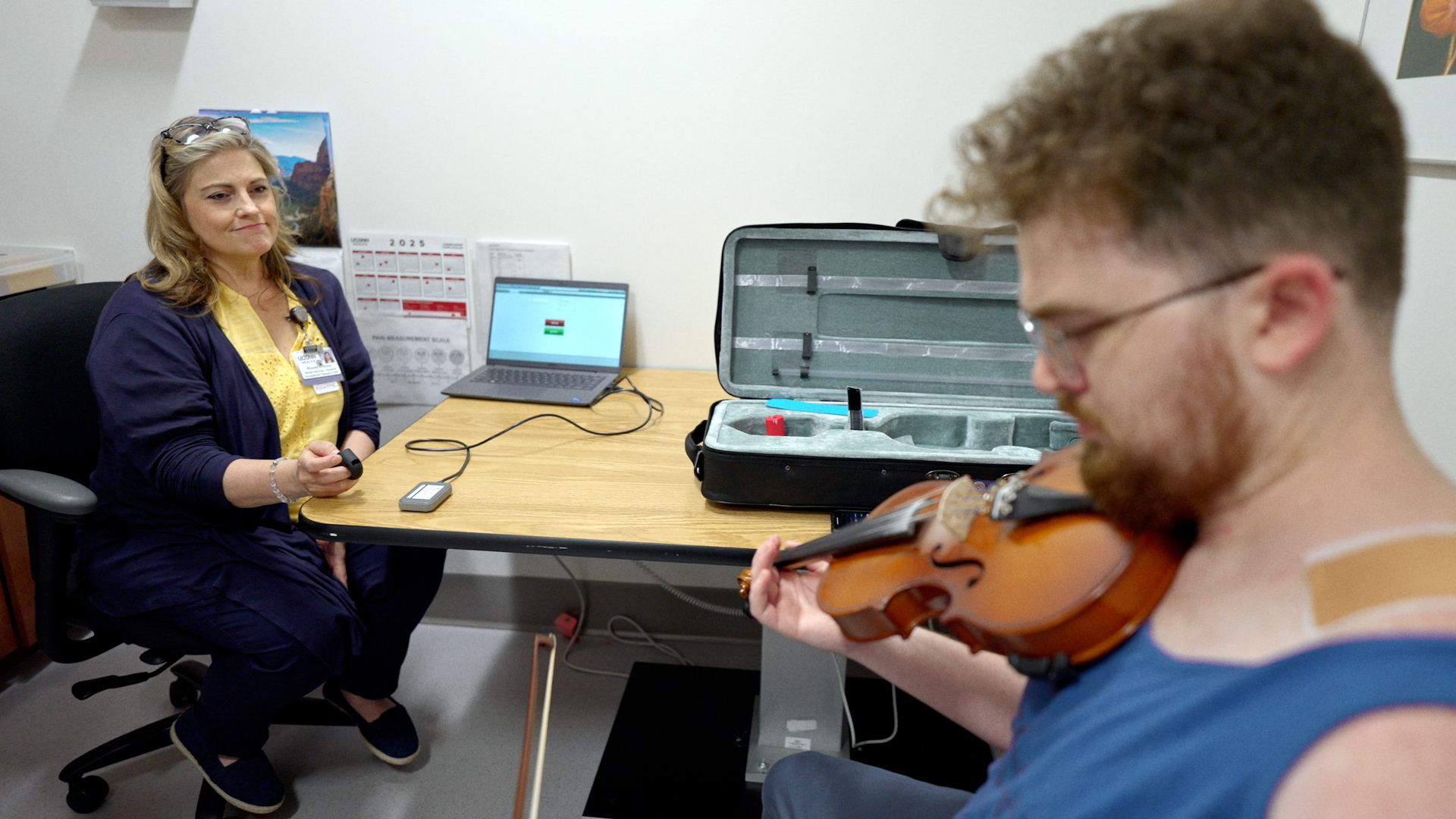
The laboratory of UConn anthropologist Natalie Munro is a treasure trove of animal bones. She has assembled the collection for teaching students how to identify everything from the species and age of the animal to how it died.

Diversity of specimens is critical for that education, and Munro has been creative about amassing a rich collection.
Interspersed between the bleached remains of animals tens of thousands of years old from distant digs are newer specimens from closer to home – roadkill both collected and donated.
“We have processed roadkill specimens, especially when we were first getting the lab up and running,” says Munro. “My collection is more for teaching, than for research – it’s mostly about having a large enough variety of specimens so that I can teach my zooarchaeological method and theory class about how to identify bones and understand what they can tell us about human behavior.”
Students in Munro’s lab train their eyes in taphonomy, or the study of surface markings that yield information about what happened to the bone. They learn to recognize details such as whether the animal was consumed by humans or other predatory animals or scavengers, and also about characteristics of the landscape where that bone ended up. For instance, if it was tumbled in water, collected from animal scats, or buried in sandy soil.
Gaining the knowledge to piece together the clues left in the archaeological record requires a lot of hands-on learning. Preparation of the new additions is part of the process.
On one side of Munro’s lab is a fume hood, but not for the ordinary purpose of removing vapors from noxious chemicals. Here, its purpose is to remove the smell of decomposition emanating from animal remains soaking in buckets of water.
The soaking method works by submerging the remains in water for a period of time, usually month or so, after which the water, flotsam, and jetsam is poured off. By then, the bones are fairly clean and the job is largely done. The soaking, or macerating, is extremely effective, albeit stinky and unpleasant.
The process has yielded some unlikely bedfellows. The bones of badgers and raccoons from North America are cataloged with gazelles and monkeys from another continent. “We have appropriate specimens to ask a student if a bone is the distal femur of a wildcat or a fox,” says Munro.
Currently, the contents of the buckets are remnants of the annual roast the archaeology faculty host for students, which is in itself a learning experience. Students recreate an ancient roast, making tools to prepare a previously purchased and humanely killed goat or lamb carcass. The bones are then added to Munro’s collection for future analysis.
Munro’s enthusiasm about the research and teaching using the collection shines.
“I find it motivating,” she says. “You are constantly being rewarded and surprised.”



